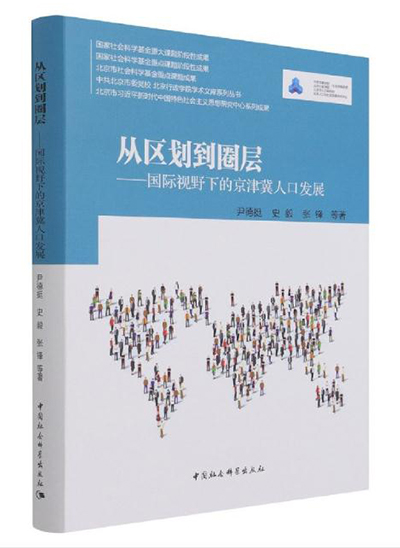Population development in Beijing-Tianjin-Hebei region

From Administrative Divisions to Concentric Zones: The Population Development of the Beijing-Tianjin-Hebei Region from an International Perspective
From Administrative Divisions to Concentric Zones: The Population Development of the Beijing-Tianjin-Hebei Region from an International Perspective, by Yin Deting, a professor from Beijing Municipal Party Committee School (Beijing Administration Institute), among others, theoretically and practically discusses the evolution of population agglomeration in the Beijing-Tianjin-Hebei region and its relationship with the coordinated development of the regional economy, based on the concentric zone theory, local practices, and a global perspective.
The Beijing-Tianjin-Hebei city cluster is one of the most densely populated regions in China. It is also a region with prominent population polarization effects and large regional gaps. This book vividly identifies the new trends of coordinated population development in the region. Since 2015, the region has seen a proportional demographic decline relative to the whole country as the “gravity centers” of regional populations have begun to shift from northeast to south. The demographic proportion of Beijing and Tianjin has gone from rising to falling, and the population adsorption capacity of Beijing, Tianjin and Langfang has significantly increased.
Using exploratory spatial data analysis and other methods, the book comprehensively unveils the spatio-temporal dynamic evolution of population distribution in China’s representative urban agglomerations, including the Beijing-Tianjin-Hebei city cluster. The results show that most city agglomerations in the country are experiencing a transition from the polarization of central cities, to city clusters, and on to regional groups. In the whole development process, demographic scale and agglomeration effects always maintain a certain concentric symmetry. When population attraction and agglomeration ability continue to diffuse to outer rings, scale and agglomeration effects inside the city cluster show a declining trend, ultimately improving the overall competitiveness of the cluster. The Beijing-Tianjin-Hebei city cluster is a vivid manifestation of such a development process.
The book further expands the vision by comparing the population distribution and changes of the Beijing-Tianjin-Hebei urban agglomeration with the urban agglomerations of northeastern North America, the Tokyo metropolitan area, the Toronto metropolitan area, and other concentric zones. It finds the relevant regularities of population evolution of urban agglomerations, including “the wave-mode outward push of population ‘gravity centers’ of urban agglomerations,” “relatively stable population proportion in the 30-kilometer radius ring of the central city,” and “the spatial distribution of population going through a 50-year cycle from drastic changes to stabilization.” As such, it proposes the necessity of transforming from the planning of “single cities” to “overall” regional planning of urban agglomerations.
Lu Jiehua is a professor from the Department of Sociology at Peking University.
Edited by YANG LANLAN

 PRINT
PRINT CLOSE
CLOSE